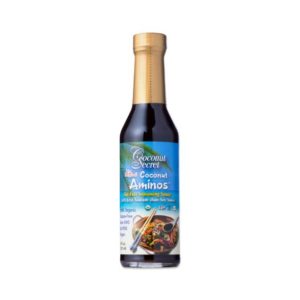How many people have you heard say they were asked by their doctor to eat gluten free or dairy free or “whatever” free? (You might be thinking, what’s left?) Although it may be a change, and a difficult change at first, it’s totally doable! More and more these days, people are finding that if they cut out certain foods, they feel better. No more joint pain. No more bloating. No more nausea. They find a whole new world opens up, and they are able to do the things they used to but without the problems.
Yes, it can seem daunting to cut out some of your favorite foods, but never fear, making tasty, healthy dishes that meet all your “free” needs can be attainable and delicious! Start with these helpful steps:
- Follow a doable system for avoiding cross-contamination
 The most effective way to avoid cross-contamination with ingredients like gluten or dairy is to make your kitchen completely “free” of these substances. However, if you have a shared kitchen, you can still create free zones and practices, like keeping surfaces, dishes, and containers clean and “free” products separated from other foods. Rachel Begun, MS, RDN, offers these practical ideas for a gluten-free approach, which you can apply to any “free” items:
The most effective way to avoid cross-contamination with ingredients like gluten or dairy is to make your kitchen completely “free” of these substances. However, if you have a shared kitchen, you can still create free zones and practices, like keeping surfaces, dishes, and containers clean and “free” products separated from other foods. Rachel Begun, MS, RDN, offers these practical ideas for a gluten-free approach, which you can apply to any “free” items:
- Place gluten-free items above gluten-containing items in the pantry and refrigerator, so gluten particles don’t fall or settle into gluten-free foods.
- Identify gluten-free foods with an indelible pen or stickers.
- Thoroughly clean all dishes, pots, pans and utensils between uses.
- Purchase a second, gluten-free toaster.
- Use a separate set of cutting boards for gluten-free food prep.
- Have two sets of condiment jars or a squeezable condiment container, reducing the risk of contaminated spoons getting dipped into your mustard or peanut butter.
(Bullet points from “Avoiding Gluten Cross-Contamination” article. Read more at http://www.eatright.org/resource/health/diseases-and-conditions/celiac-disease/avoiding-gluten-crosscontamination.)
While it may seem more expensive to use separate cutting boards, containers, etc., these measures can save money in the long term when you consider the alternative cost of purchasing pre-made gluten-free, dairy-free, soy-free, and/or egg-free products.
Also, remember that thorough, consistent washing procedures help cut down on cross-contamination. You can even line pans with parchment paper or a non-stick baking SILPAT® to provide a clean layer, which makes post-baking clean-up easier.
- Cook with alternatives
Although some exact dishes may not be “reproducible” with alternative ingredients, you can find many tasty substitutions to update—and keep—your family favorites. For example, try these options:
- For buttermilk: use a mixture of vinegar and coconut milk in your baking—the generally accepted ratio is two tablespoons of vinegar to half a cup of your milk of choice.
- For the binding qualities of gluten: consider using tapioca flour or potato starch in addition to your base flour. Tight on time? Try a tested-and-approved mix, like Bob’s Red Mill’s 1-to-1 gluten-free flour, which already includes binding agents and has good flavor.

- For soy sauce: substitute with aminos, like Coconut Secret coconut aminos. It’s delicious!
- For milk: try different types of coconut, rice, and/or nut milks with no sugar added. Different brands have different flavors that match different recipes. For example: Trader Joe’s Coconut Beverage (unsweetened; in the green carton) has a very subtle coconut flavor that blends well with unexpected ingredients, like in Stroganoff.
- For eggs: try 1 tablespoon of ground flax seed and 3 tablespoons of water for 1 faux egg. It works like a charm!
- Cultivate skill and mindset. Watch the pros. Embrace tasty freedom!
Instead of getting bogged down by “off-limit” ingredients or getting frustrated about failed cooking experiments, shift your focus to developing an eager “food attitude.” This positive food adventure attitude will infuse you with a desire to refine your skills, helping you enjoy and benefit from food for your lifetime.
To update your mindset, it helps to tap into the wealth of knowledge from other pros, like Empowered Sustenance’s list of egg-free paleo recipes, Gluten-Free Girl’s New To Gluten-Free? web page, the numerous recipes on my website, Emily Levenson’s soy free recipes or the Sensitive Pantry that is for those with a lot of sensitive issues. You’ll find practical tips and delicious recipes, which will encourage you to build the habits that help you truly find freedom in eating free!
And just know that if you are struggling to follow or if you’re at the beginning phase of a specific food elimination diet, I have had to do it myself and can walk you through the process with suggestions, tips, and recipes. Never hesitate to reach out and ask: devi@simplywholebydevi.com



![z31[1]](https://simplywholebydevi.com/wp-content/uploads/2018/06/z311-100x100.jpg)












